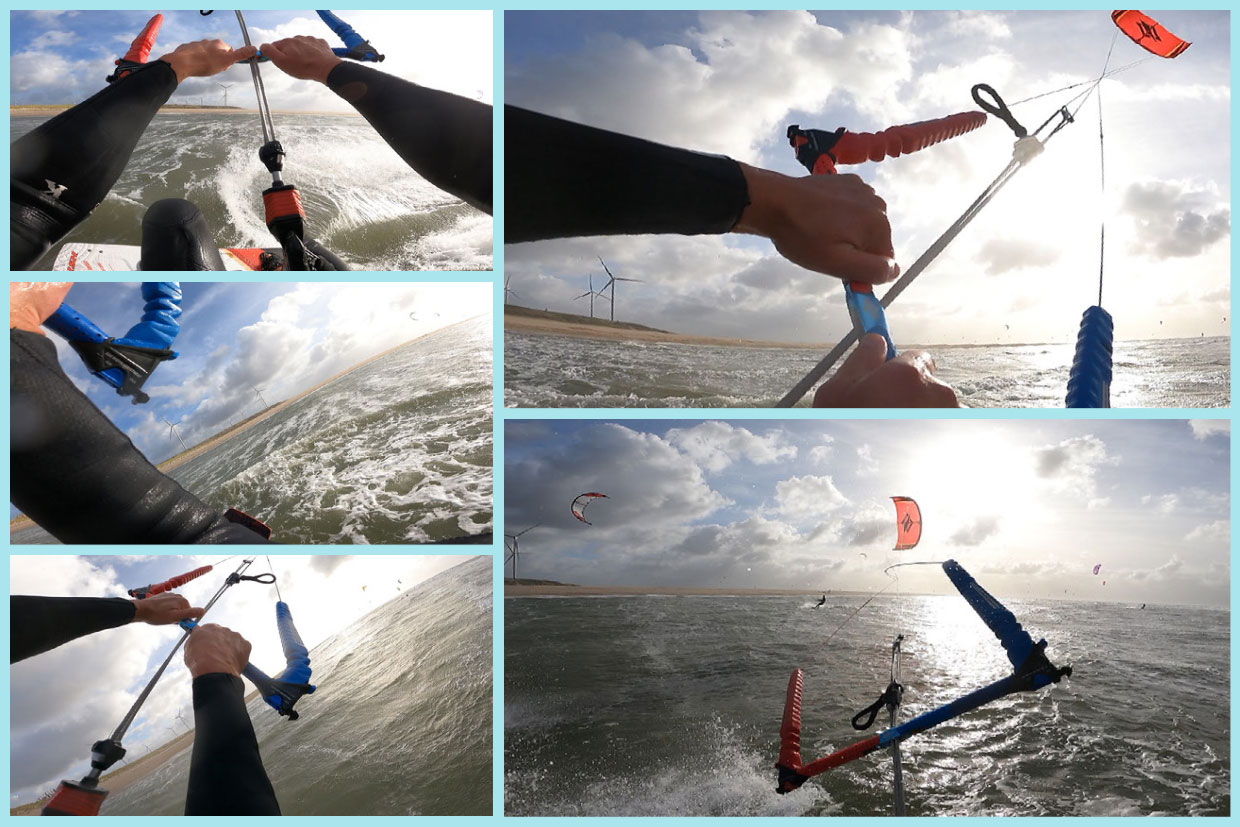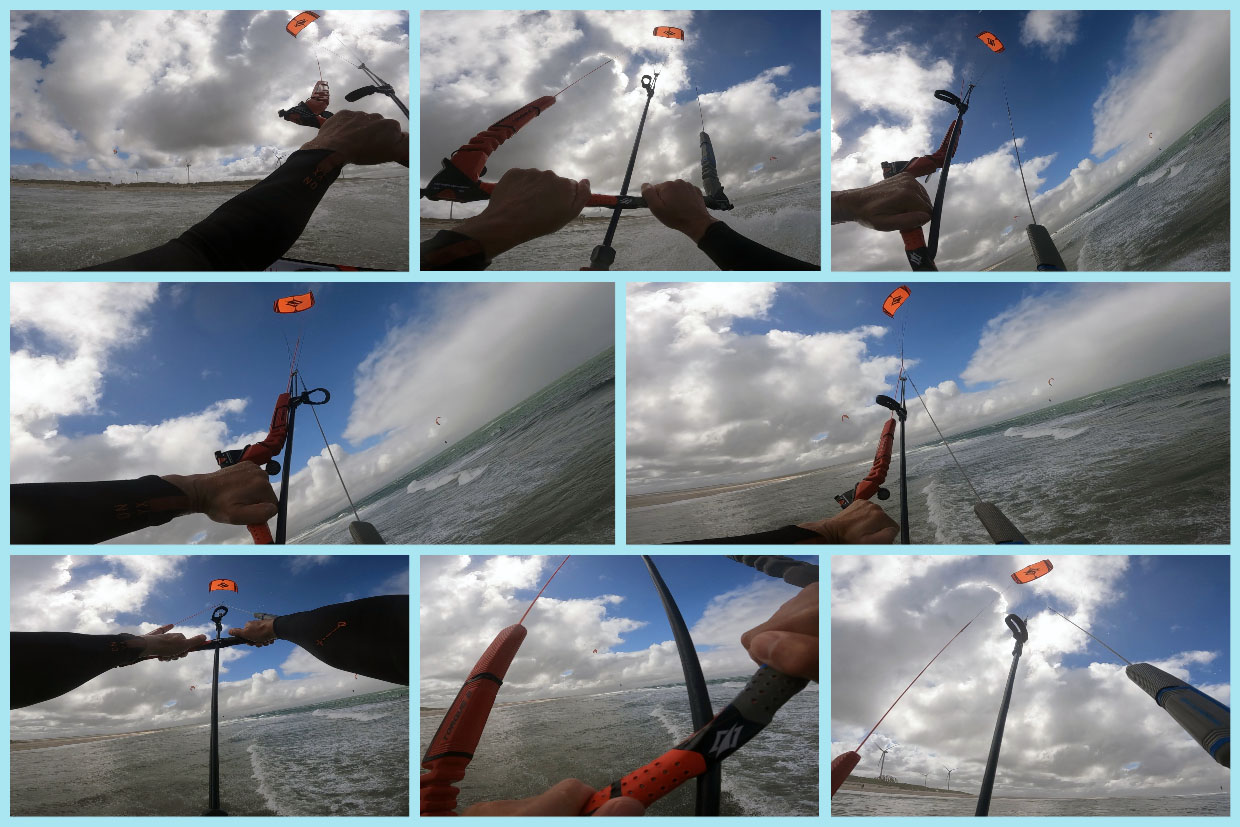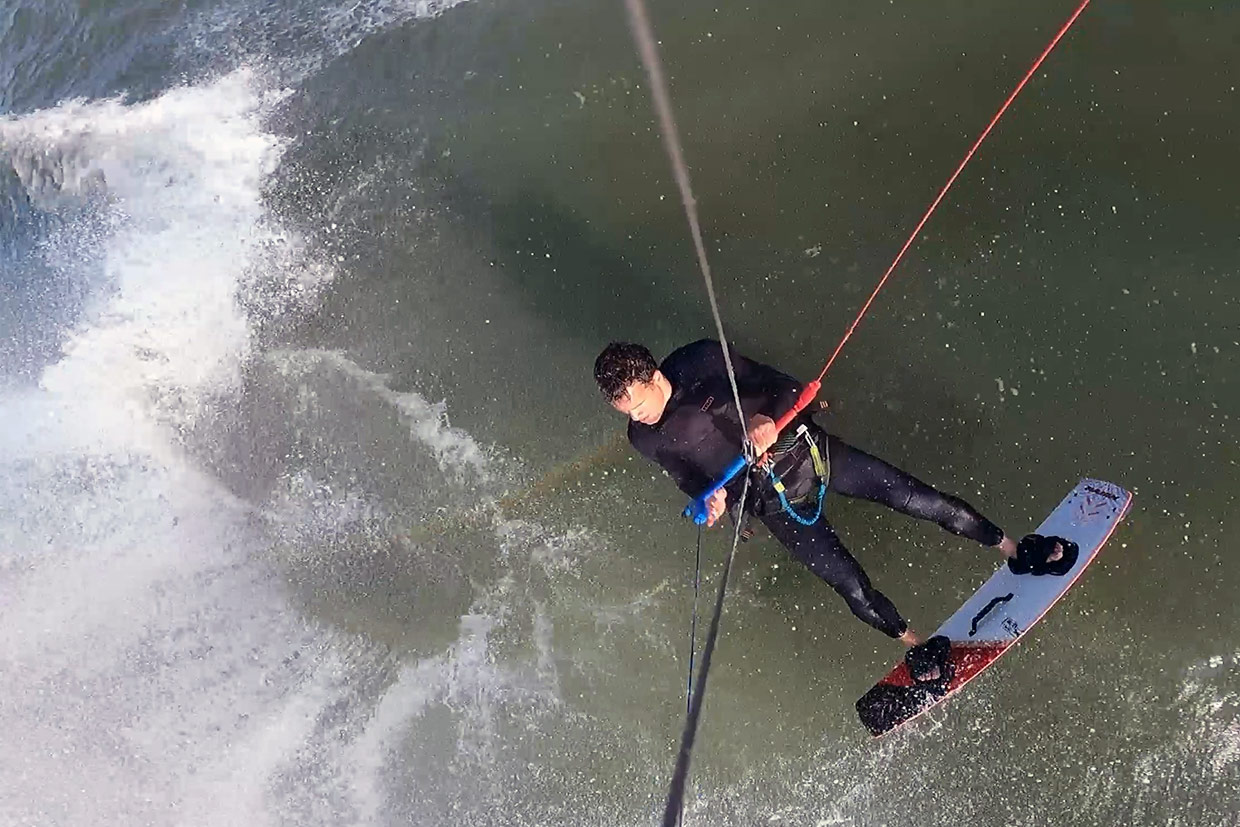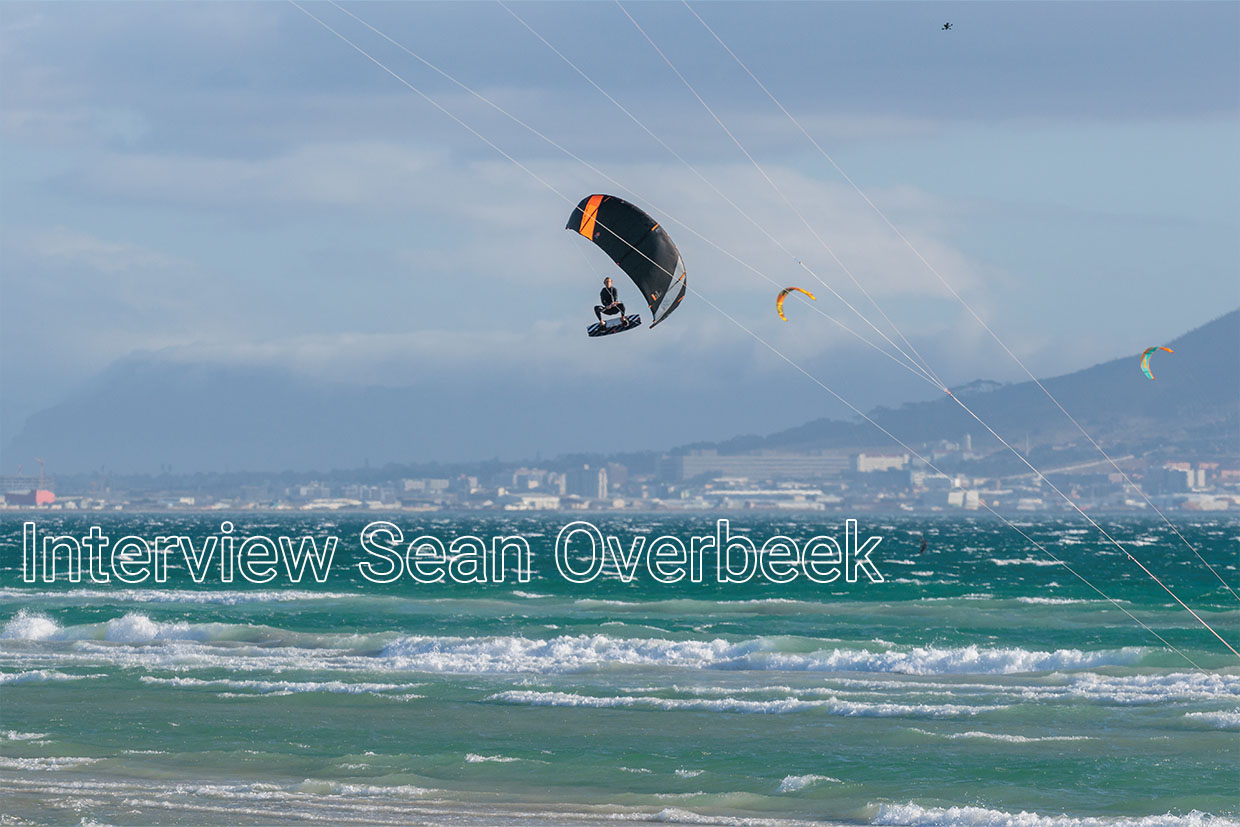Previously we have the roll back, front roll, front roll with grab and other kite surfing tricks explained. Some relatively easy tricks. We now add an advanced trick to this. The 'front roll kiteloop transition'. However, a low and therefore easy variant without too much risk of a hard crash. The word 'transition' indicates that after the front roll kiteloop we also kitesurf directly in the opposite direction. A very cool trick in combination with a transition.
Also ambitious? Join.
Of course you don't have to participate. Kitesurfing is a super diverse sport with something for everyone. Anyway, you know that we are still ambitious and practice kitesurfing tricks. Focus does work to master new kitesurfing tricks fellow kiters. Feel free to spend an entire session practicing a specific trick that you want to master. Or do this together with your kitesurfing buddies. Even nicer.
Front roll kiteloop transition in 11 steps
Just a disclaimer and some modesty beforehand. In the video you can see that the kite has not always completed its course when landing. Then there is a 'front roll downloop transition'. Only when the kite has gone completely around before landing is there a kiteloop.
Time required: 1 minute
Front roll kiteloop transition kitesurf trick learning principles
To get started on a front roll kiteloop transition you need to master the basics of making and landing jumps. So you have to be able to jump and land. You also have to be flawless front rolls can run in combination with a transition. Start practicing the front roll kiteloop transition in a suitable and stable wind. So not in strong winds with strong gusts. Calm water also helps in the beginning. As a reference: in the video you can see me making them at about 23 knots with a 9 meter kite. I weigh about 85 kilos.
- Timing the front roll kiteloop tranisition
As mentioned, we are going to make a low front roll kiteloop transition. As low as possible. That way you can learn it just fine. Of course you need some time in the air ('hang time'). But not much. Timing your take off is crucial. In the beginning, a flat patch of water is fine so that you have full control over the timing.
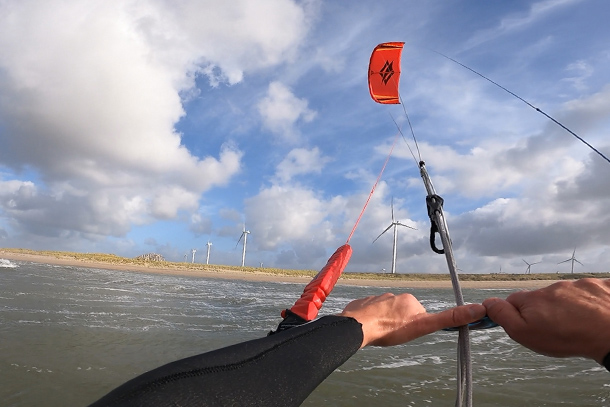
- Drop off for the jump
The low front roll kiteloop transition starts with a moderate push-off, so not too hard. For this you have to tilt the kiteboard while steering the kite towards 12 o'clock.
Stay sideways as long as possible until the kite is almost directly above you. You only have to tighten the bar slightly to get rid of the water. If you side too hard and pull the bar too hard you will be pulled too hard into the air. This is fun for later, but we want to teach you to do the front roll kiteloop tranisition in a dosed manner.
Don't lean too hard, don't pull the bar too hard and don't steer the kite past 12 hours. This is not necessary for this trick.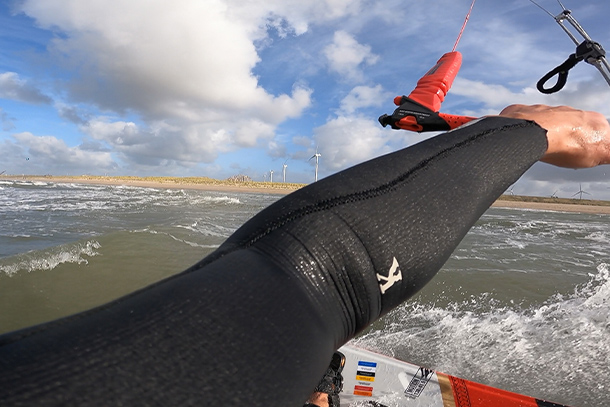
- Hands not too far apart
Just before your take-off, make sure your hands aren't too far apart at the bar. This ensures that your kite stays as good as possible at 12 o'clock or just over the middle of the wind. So on the opposite side of your sailing direction. If you don't do this, you will quickly be pulled into your direction in the air with the risk of losing your balance and resulting in a crash. This is also important because the rotation will probably disorient you for a while.

- Front foot behind the kite
When taking off, make sure that your back foot stays low or that the back of the kiteboard keeps contact with the water for as long as possible. On the other hand, you let the proposed foot go behind the kite. This has started the rotation.
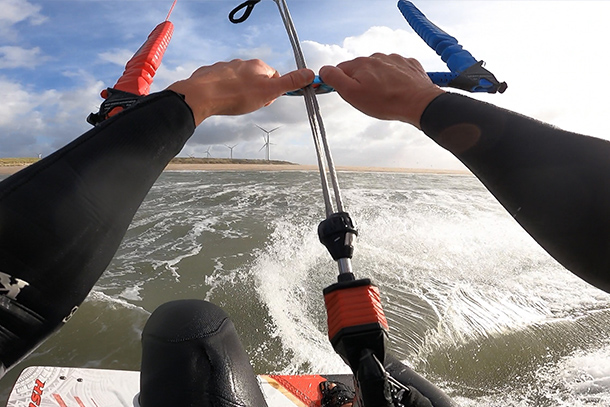
- Degree of depowering
Because I explain a low front roll kiteloop transition, you sometimes see me depowering after the take-off, even before I hang backwards. I try to dose the depower so that I rotate at a constant height. You can see me in the video when I don't depower immediately jump a bit higher. When learning it is nice to depower so that you don't jump too high. This way you keep control and build trust.
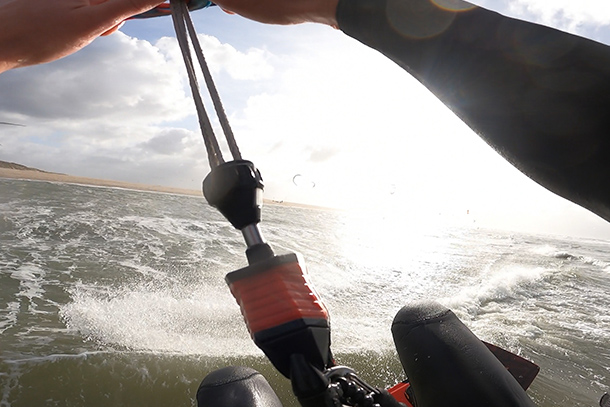
- Your viewing direction determines success
With rotations, your viewing direction actually determines the success of the trick. By actually looking over your shoulder during a front roll, you ensure the rotation. You look where you want to go. It may sound strange but it really is. Hold this!
This process stops the moment you have the location of the landing in view. From that moment on you keep looking at the place where you want to land. In this case we throw another kiteloop after it. We will use it with full conviction. That's how it should be with a kiteloop. Once deployed, the motto applies: 'There is no way back!'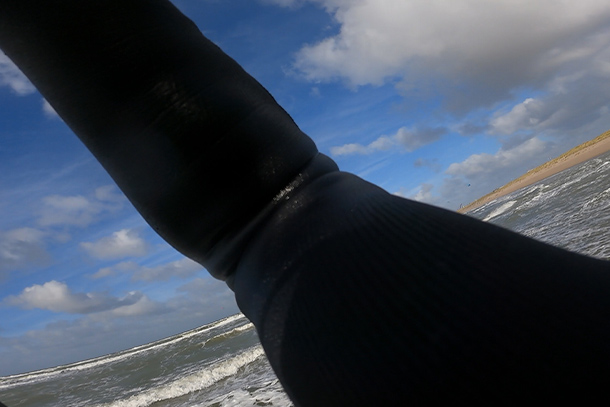
- Now the kiteloop
You actually see me doing the looping of the kite at the end of the front roll. This variant makes this beautiful kiteloop much more pleasant than a front roll kiteloop where you use the kiteloop much earlier. Then you hang high and backwards with the risk of getting disoriented.
The timing of the loop is as follows for a low front roll kiteloop transition. Just before you have finished the front roll and have gone all the way around, you send the kite into a kiteloop. To end up in a transition, the kite has to go all the way around and then come out at about 2 o'clock. At least in the new direction. So full throttle with that kiteloop by pulling on the right side of the bar.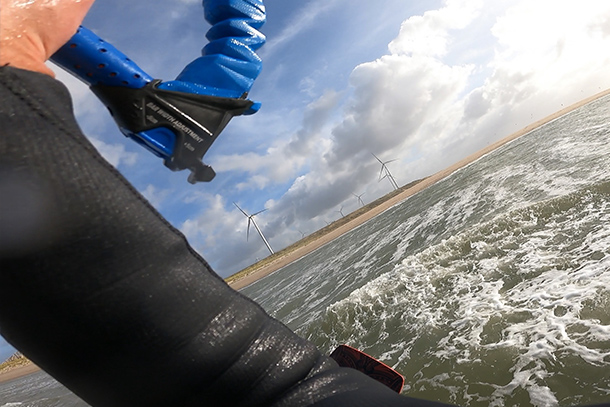
- Time Landing
The kiteloop will generate forward force and pull you forward hard. You can easily cover a horizontal distance of 10 meters just above the water. Hold on! You keep forwarding until you are done with the kite. Because you hang so low, you will have to look carefully at how you come out for a nice landing. By already steering your kiteboard slightly with the wind and leaning back, you can land when necessary.
Are you completely turned off and haven't landed yet? Then you can stretch your knees and make yourself tall so that you hit the water faster and can kitesurf further. By bending your knees further, you can provide some extra time when landing. This is useful if you're already sinking hard but aren't quite ready to land yet.
Sometimes side landing is better. No problem, just roll the kiteboard off on the water.
- Submit a kite
When descending and timing the landing, you steer the kiteloop until it points to the sailing direction. If you do this too early, you will quickly be pulled sideways. If you do this too late, you may dangle under your kite and a clean landing will be jeopardized.
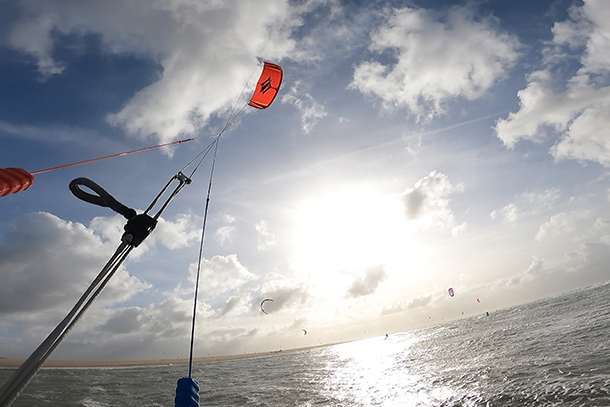
- Rewind bar
Because you have made a rotation and a kiteloop in the same direction, your lines are crossed twice when you land. Rotating your bar in the opposite direction to your rotations will ensure that your lines are no longer crossed.
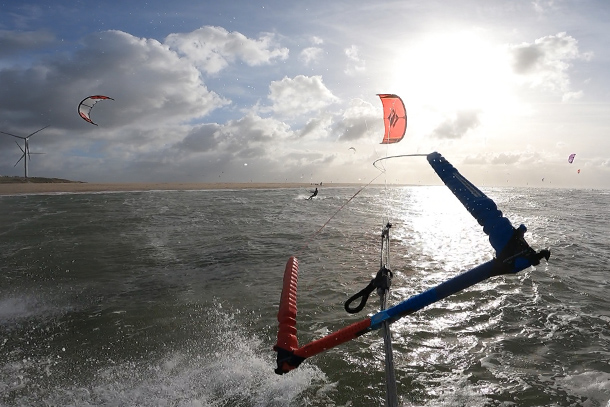
- Follow the course and reminisce
You can now go extra sides to walk high and do what you want. Making your own and performing the front roll kiteloop transition feels wonderful. Enjoy it.
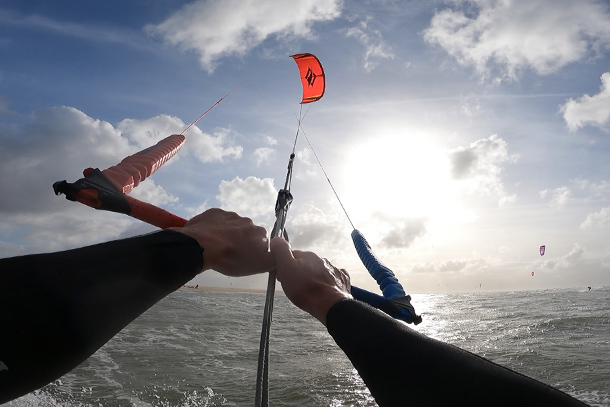
Conclusion front roll kiteloop transition
Of course this is a kitesurf trick for advanced users. Some kitesurfers don't like one kite run. However, as you can see, this version is really a lot more relaxed than a (high) kiteloop. So it is. So if you can control the front roll and transitions, a front roll kiteloop might be worth trying as the next jump on your list.
Which kitesurf trick do you want to learn? Let us help…
Do you have a kitesurfing trick that you would like to learn and want some explanation about? Let us know. We are really not the best kite surfers, but we like to guide kite surfers and kite surfers in the making. In addition, we are in contact with the best kite surfers who might want to give us, and therefore you, a helping hand.


